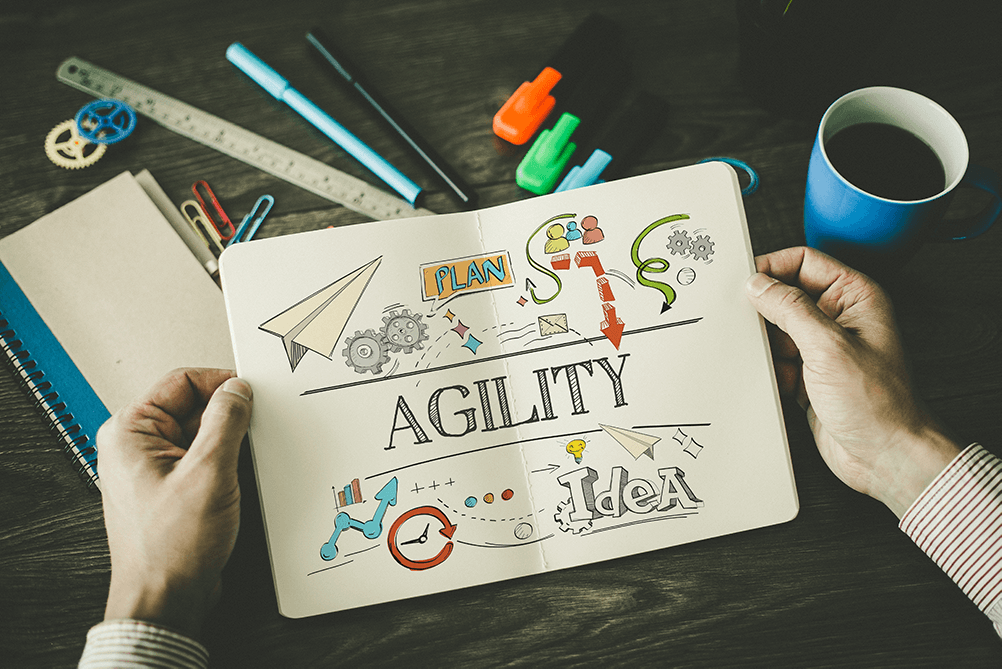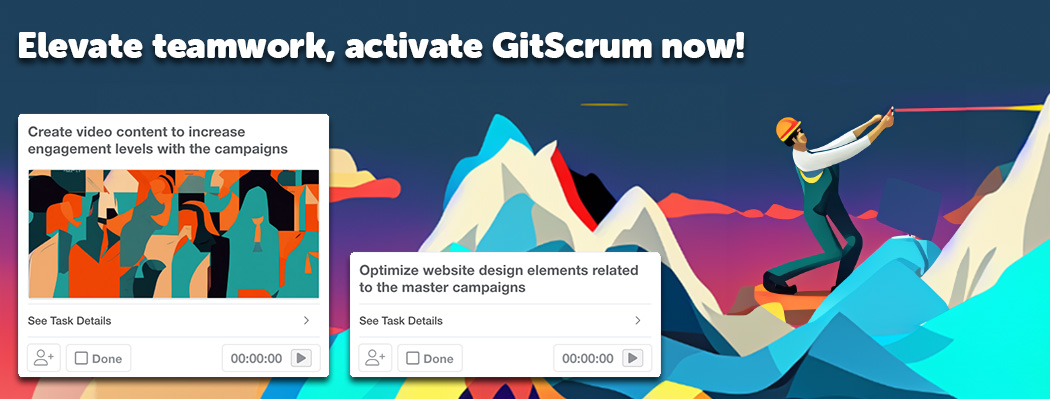
Every day, companies look for teams development and productivity to be steady. There are plenty of tools to set deliveries to different stakeholders and Agile Release Train (ART) brings solid solutions.
The Agile Release Train is a self-organizing team of Agile teams, a virtual organization (5 to 12 teams) that plans, commits, and executes together.
ARTs are organized around the company’s significant value streams and live solely to realize the promise of that value. It builds solutions that deliver end-user benefits.

In this article, you will find out what means Agile Train Release and its main features that help teams find better solutions and deliver great results for clients.
What is Agile Release Train?
It is a team of agile teams that, together with other interested parties, develop and incrementally deliver one or more solutions in a Value Stream.
Agile Release Train is also an agile management system focused on maintaining a long-term team of Agile teams, in which, together with other stakeholders. It develops, delivers, and where applicable operates, one or more solutions in a value stream.
Therefore, an ART is a team of Teams responsible for the regular release of Business Features and Benefits. All teams in an ART are linked by a common Vision, a Program Backlog, and a Roadmap. An Agile Release Train typically consists of 50 to 125 people.
Synchronization
ARTs also address one of the most common issues with traditional Agile development: teams working on the same solution operate independently and asynchronously.
This makes it extremely difficult to routinely integrate the complete system. In other words, the teams are iterating but the system is not.
Continuous Delivery Execution
ARTs aim to deliver value to their customers continuously. This goal is supported by a Continuous Delivery Pipeline, which contains the workflows, activities, and automation needed to support the release of new features.
Each Agile Release Train builds and maintains (or shares) a Continuous Delivery Pipeline with the assets and technologies needed to deliver the solution value as independently as possible.
The first three elements of the pipeline work together to support the deployment of small batches of new functionality, which are released to meet market demands.
Ongoing exploration is the ongoing process of exploring the market and user needs and defining a vision, roadmap, and set of assumptions to address those needs.
Continuous integration is the process of taking resources from the program backlog and developing, testing, integrating, and validating them in a test environment where they are ready for deployment and release.
Continuous deployment is the process of taking validated features and deploying them to the production environment, where they are tested and ready for release.
Release on Demand is the process of delivering value to the end-user, measuring and learning from the hypothetical results, and operating the solutions.
Continuous Delivery Pipeline development and management support DevOps, a feature of each ART. SAFe’s approach to DevOps uses the acronym ‘CALMR’ to reflect the concepts of Culture, Automation, Lean Flow, Measurement, and Recovery.
ARTs deliver all or part of a value stream
The organization of an ART determines who will plan and work together, as well as what products, services, features, or components the train will deliver. Organizing Agile Release Train is part of the ‘art’ of SAFe.
This process covers extensively the Implementation Roadmap article series. Particularly in ‘Identify Value Streams and ARTs’ and ‘Create the Implementation Plan’.
Agile Release Train Principles
ARTs operate on a set of common principles:
Fixed time
The train leaves the station at a known and reliable time, as determined by the chosen Program Cadence of the increment (PI).
One new system in every two weeks
Each train delivers a new system increment every two weeks. The Demo system provides a working system evaluation mechanism, which is an integrated increment of all teams.
Synchronization
All teams on the train synchronize with the same PI duration (typically 8 – 12 weeks) and have common iteration start/end dates and duration.
ART speed
Each ART can reliably estimate how much cargo (new features) you deliver in a PI.
Agile Teams
Agile teams adopt the ‘Agile Manifesto’ and the SAFe Core Values and Principles. They apply Scrum, Extreme Programming (XP), Kanban, and other internal quality practices.
Dedicated People
Most of the people needed by ART are dedicated full-time to the train, regardless of their functional reporting structure.
In-person IP planning
ART plans its work at periodic, primarily in-person, IP planning events.
Innovation and Planning (IP)
IP iterations occur at the end of each IP and provide an estimating guard band (buffer) as well as dedicated time for IP planning, innovation, continuing education, and infrastructure work.
Inspect and Adapt (I&A)
An I&A event is held at the end of each IP. It evaluates the current state of the solution. Teams and management identify improvement backlog items through a structured problem-solving workshop.
Develop on Cadence, Release on Demand
Agile Release Train applies cadence and synchronization to help manage the inherent variability of research and development. ARTs may release a solution, or elements of a solution, at any time, subject to governance and release criteria.
Additionally, in more significant value streams, multiple ARTs collaborate to build more comprehensive solutions through a Solution Train. Some ART Stakeholders participate in Solution Train events, including pre-and post-PI planning and solution demonstration.
Agile Release Train Organization
ARTs are typically virtual organizations that have all the people needed to define, deliver and operate the solution. This new organization breaks the traditional functional silos that may exist, as shown in the following figure.
In such a functional organization, developers work with developers and testers collaborate with other testers, architects and system engineers work with each other, and operations work on their own.
While there are reasons why organizations have evolved this way, the value doesn’t flow quickly as it must cross all silos. The daily involvement of managers needs to move work between these defenses, and as a result, progress is slow and transfers and delays dominate.
Agile Release Train applies systems thinking and organizes around value to build a cross-functional organization that facilitates the flow of value from inception to deployment and release and operations.
Agile teams drive the train
ARTs include the teams that define, build, and test features and components, as well as those that deploy, release, and operate the solution.
Individual teams can choose Agile practices, based primarily on Scrum, XP, and Kanban. Software quality practices include architectural and design quality, code quality, systems quality, and release quality practices (see Integrated quality).
Hardware quality supports exploratory early iterations, frequent system-level integration, design verification, Model-Based Systems Engineering (MBSE), and SetBased Design. Agile Architecture supports both software and hardware quality.
Each Agile team has five to eleven dedicated individual contributors. It covers all the roles necessary to build a quality increment of value with each iteration.
Specialized team roles
Each agile team has dedicated individual contributors, covering all the roles necessary to build a quality increment of value for an iteration.
Most SAFe teams apply a hybrid ScrumXP and Kanban, with two special functions:
Scrum Master
The Scrum Master is the servant leader for the team, facilitating events, promoting agile behavior, removing impediments, and keeping the team focused.
Product Owner
The Product Owner owns the team’s backlog, acts as a customer proxy for developer questions, prioritizes work. And collaborates with Product Management to plan and deliver solutions.
Critical Agile Release Train Functions
In addition to Agile teams, the following roles help ensure the successful execution of Agile Release Train:
Release Train Engineer (RTE) is a leading server that facilitates program execution, removal of impediments, risk and dependency management, and continuous improvement.
They work with customers and product owners to understand and communicate their needs. And they also participate in validating the solution.
The system architect/engineer is an individual or team that defines the overall architecture of the system. They work at a level of abstraction above teams and components. And define Non-Functional Requirements (NFRs), the main elements of the system, subsystems, and interfaces.
The company owners are the main stakeholders in ART and have ultimate responsibility for the commercial results of the train.
Customers are the ultimate buyers of the solution
In addition to these critical ART functions, the following functions play an essential role in ART’s success:
Systems teams often assist in building and maintaining development, continuous integration, and testing environments.
Shared Services are specialists. For example, data security, information architects, database administrators (DBAs), that are necessary for the success of an ART to specific training.
GitScrum supports your team to better results and effective deliveries!
Set your workflow and board to guide your Agile team, assign Tasks, Subtasks and keep in charge of the whole process evolvements. Allow your Agile team to collaborate.
Reach higher levels of efficiency, productivity, and deliverability with GitScrum. Work focused on prioritizing what’s valuable and tracking your flow to overcome results.
Sign up now and make your team grow together!